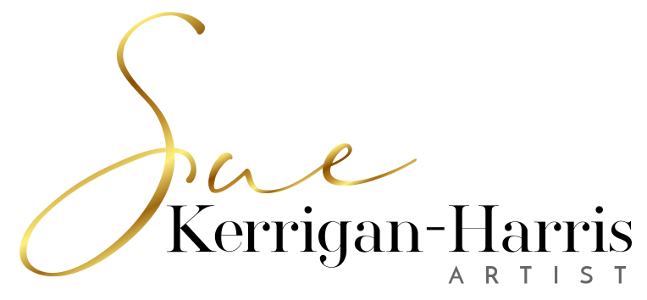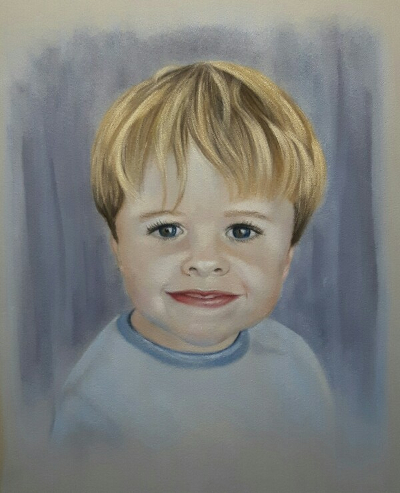Now that I’m using velour paper for all my portraitsI wanted to transform another photo to painting. I love the ethereal / soft effect that I can achieve with velour. This is 2 years on from the previous portrait of my son and in a way, much more difficult to get a photo of him because he’s aware of the camera and wants to do a terrific smile! He has a gorgeous smile that he does when he’s done something naughty (not often!) – I tell him I’m sad so he tries to get me to smile but smiling at me in a way that is so serene and beautiful that i love it and can’t help but smile back. It took me about 6 months to get the photo! In the end I asked him to do the smile that he does when he wants me to smile. And he did! So I snapped away and got a lovely shot. He was able to do this because he had to sit for a passport photo and I had taught him that he mustn’t smile.
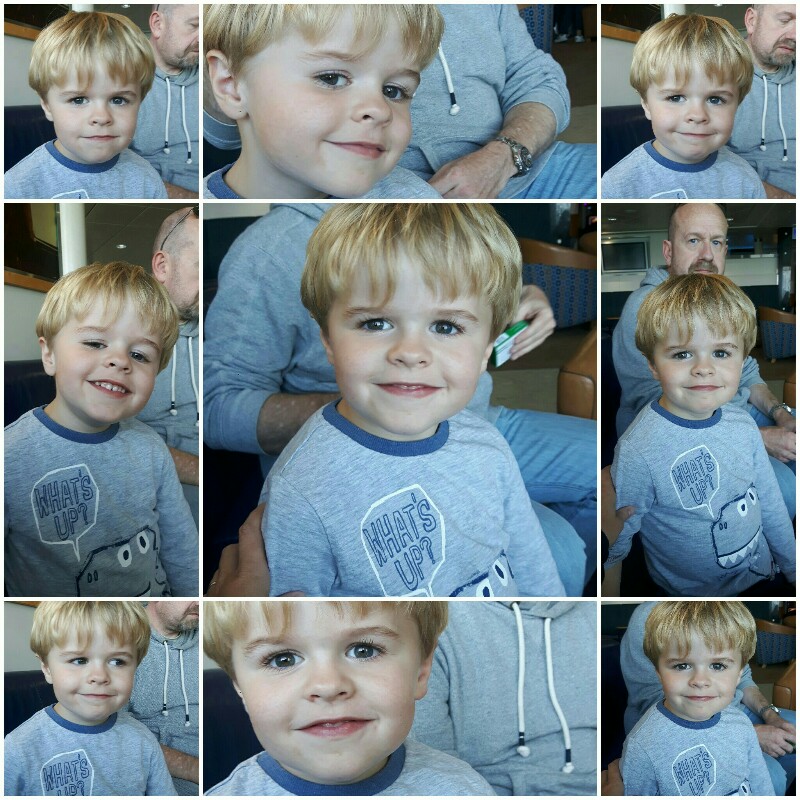
The middle shot is the photo I used – he’s got his mouth closed here – well almost and his eyes sparkle. it’s exactly what I’d been waiting for for 6 months! It’s good advice to set your camera to continuous shooting. Even some smart phone cameras have this ability now.
On with transforming the photo to painting. I had a small gap in commissions so I started his line drawing and transferred it onto my velour paper. Velour paper isn’t great when you want to sketch something to get a likeness. I prefer to draw it out on paper and then transfer it. I forgot to take a photo of just the sketch. In this photo I’ve stated with some of the darker skin tones.
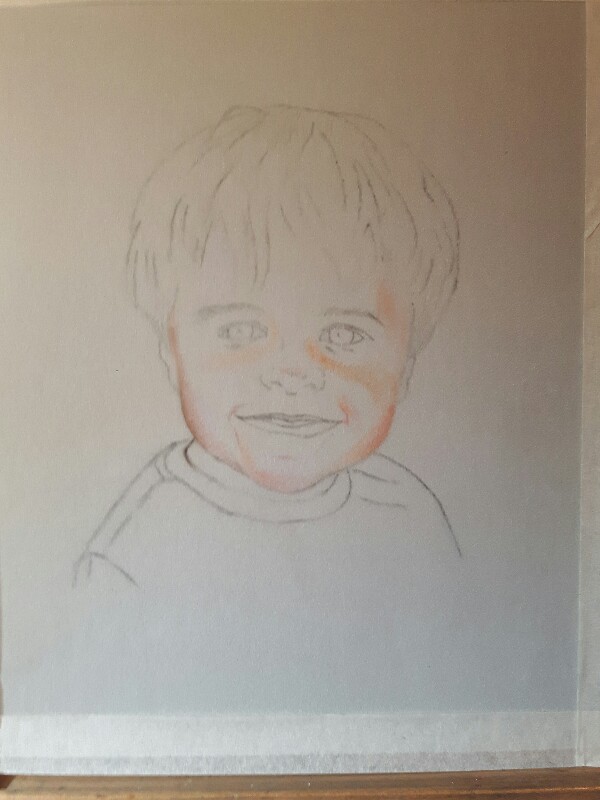
I’m gradually building up the skin tones here. I don’t always approach a child portrait in the same way. Sometimes I do all the skin first, other times, like with this one I go with what feels right and it felt right to get some of his features in so I could see the likeness of him appearing before my eyes.
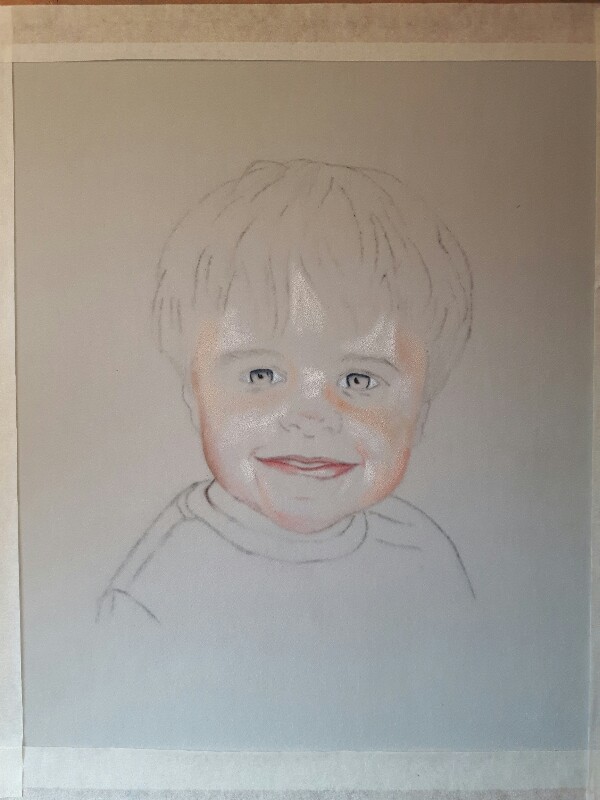
In this photograph you can see I’m working on his darker skin tones to create the form of his face and then adding the mid tones afterwards. Without these dark tones there would be no definition and you wouldn’t see his face or achieve a likeness. Sometimes the darks seem to dark in isolation so it’s important to keep the whole portrait in mind.
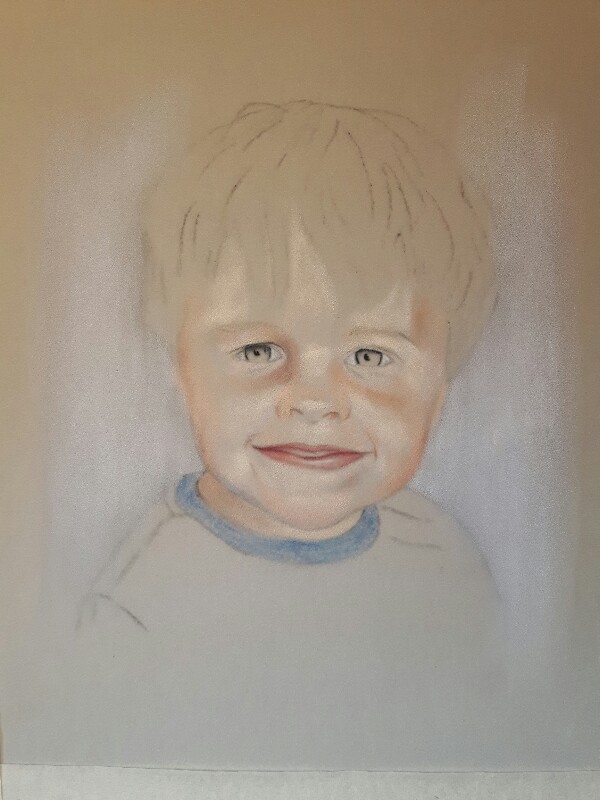
At this point I had to stop painting and start working on Christmas commissions as they were coming in thick and fast.
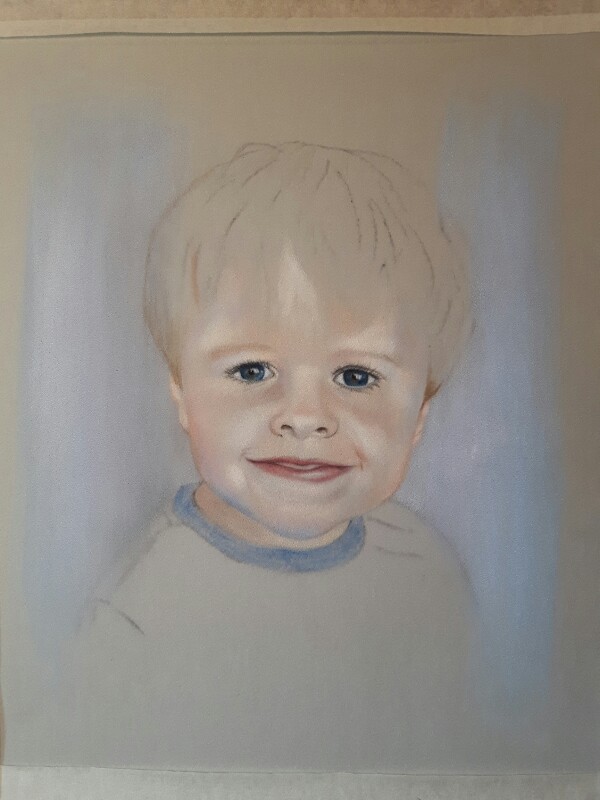
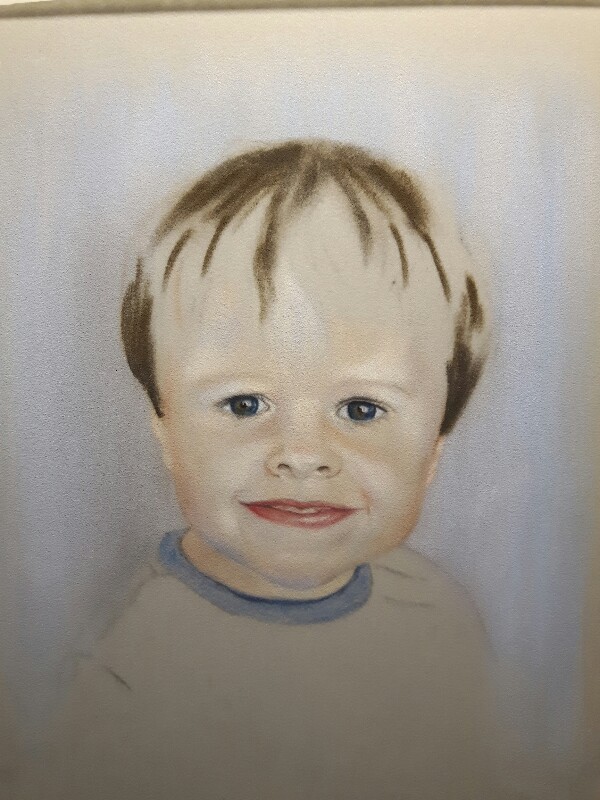


The background I have added a darker blue grey colour to help him stand out and enhance his position in the painting.
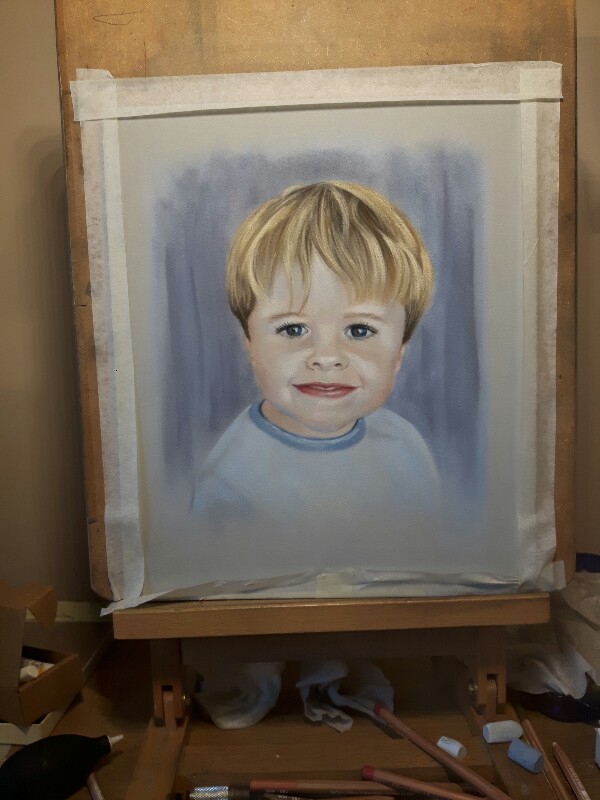
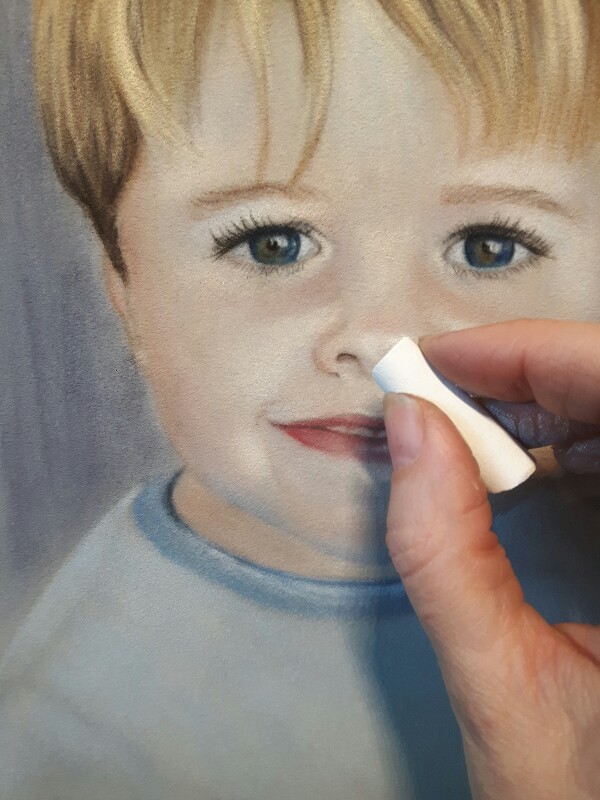
The original photo was a beautiful shot of my son but the background had a lot to be desired – we were on a ferry heading back from France so I had great lighting from the windows but terrible background information (apart from his dad in the photo of course!) Being able to remove the background noise of the photo is what transforming a photo to painting is all about.
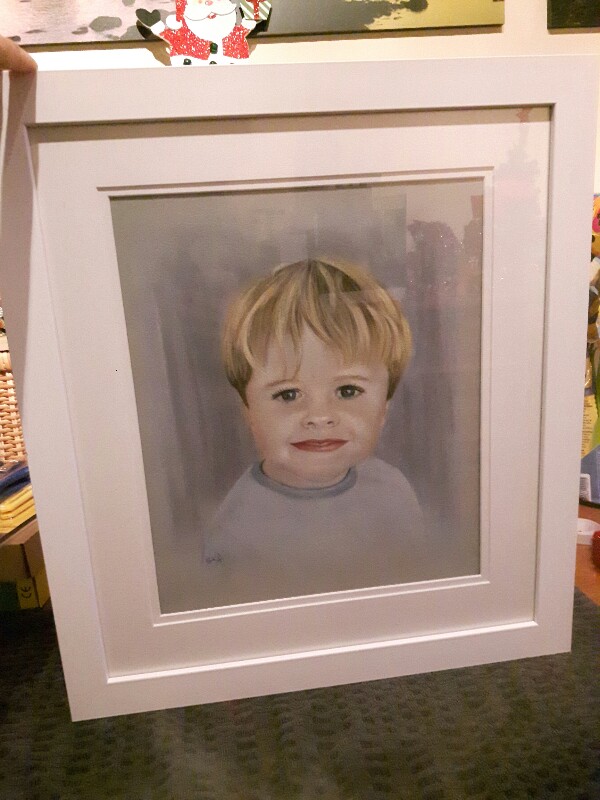
Sue is a Soft Pastel Artist and International Tutor from England UK
She's passionate about soft pastel art and teaching her students from around the globe.
"Art makes my heart sing and my soul smile"
